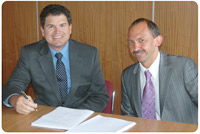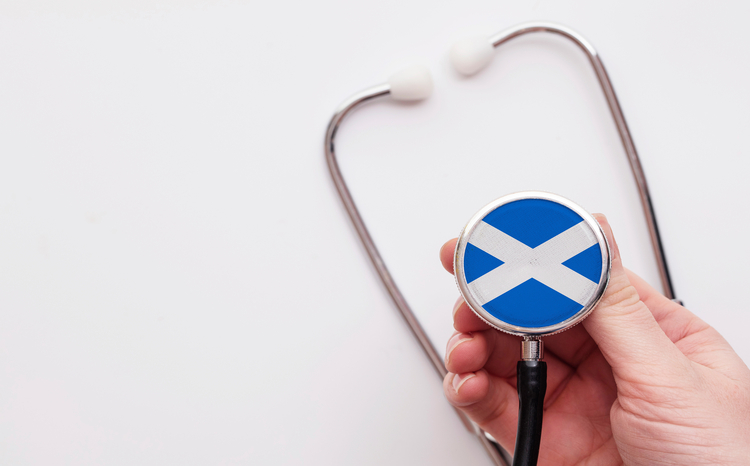Three Scottish health boards sign PACS deals
- 20 August 2007
 |
Three Scottish health boards have signed access agreements with Carestream Health to install Picture Archiving and Communications Systems (PACS), as part of the National Services Scotland contract.
NHS Lanarkshire, NHS Borders and NHS Lothian have all signed agreements to install Carestream PACS and information management solutions by the end of this year, bringing the total number of implementations to seven of the 15 Scottish health boards.
As the PACS roll-out progresses, each health board is required to sign an access agreement both to requisition the agreed bundles of hardware assigned to each hospital in the Board and to gain access rights to the National Software License to cover the required functionality.
The agreements follow successful implementations across four health boards including two initial sites in Glasgow during 2006; the Southern General Hospital, which includes the Institute of Neurological Sciences and the Victoria Infirmary; and more recently Dumfries & Galloway Health Board and the Golden Jubilee National Waiting Time Centre, Clydebank.
Clinicians at Scottish NHS hospitals, can when authorised, search and validate a patient’s imaging record by searching through the archive using a unique identifier, the CHI number – equivalent to England’s NHS number scheme.
Full deployment is scheduled for 2008 and is set to manage an estimated 3.2 million patient examinations annually.
Carestream Health’s sales manager for UK & Ireland, John Davidson, told E-Health Insider: "We plan for these implementations to go-live at the end of the year, and there are others who we are drafting timetables with. Momentum is building up for this technology to be deployed."
Unlike in England’s National Programme for IT, Carestream are responsible for deploying one solution to each health board in the country, covering 39 hospitals.
Davidson said: "The complexity comes when we tailor the systems for the user. Some are small, others medium-sized, and some large. We agree to deploy hardware at sites dependent on the size of the hospital and the volume of examinations the hospital actually does in a year.
"Under this contract we have one single contract, not clusters. The biggest benefit to Scotland as a whole right now is the implementation of the National Image Archive, where authorised users at every hospital across the country can access prior images and reports, regardless of where they were generated."
A Scottish Executive spokesperson told EHI: "The introduction of PACS in NHSScotland enables the delivery of a range of benefits to patients. Clinicians will be able to access images taken at stages along pathways and readily access relevant patient records. This will streamline care and speed up diagnosis and treatment.
"PACS offers the opportunity for radiology reporting to be done remotely, utilising telemedicine and potentially facilitating much more flexible working of radiologists who will be able to access images on a 24-hour, seven day a week basis. It challenges traditional radiology reporting structures and encourages organisational review and reconfiguration of imaging services across health communities for maximum efficiency."
Carestream’s solution for NHS Scotland is called Carestream 10.0, a web-based system combining PACS, the archive and a radiology information system (RIS). Clinicians can access it from any machine, with records held centrally.
Davidson said he felt deployment was on schedule, and Carestream should meet their target for full deployment by the end of next year, dependent on the availability of the other health boards.
This delay, was in part due to discussions for changes, including some change in architecture, which need to be approved by the National Services Scotland programme board.
"We have made some changes to accommodate new requirements, for example in Glasgow, we made it possible for the initial two pilot sites to be able to share their PACS database so that they could get a combined picture of all the patients going through the hospital.
"We are confident that the phased roll-out under way in Scotland will be completed on time and within budget. Trusts are eager to reap the benefits of being filmless and being able to share image generated information as soon as possible."
Martin Egan, director of eHealth at NHS Lothian, said: "The benefits to patients and clinicians alike will be significant and I look forward to the system going live on the first site towards the end of 2007, when we can start to reap the rewards of the substantial work required by all parties between now and then."
Links




